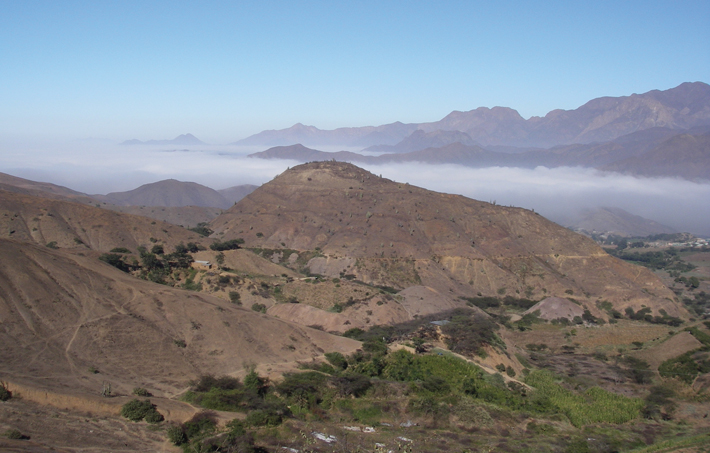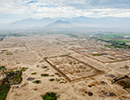Where the Coca Grows
May/June 2023
 About 25 miles from Chan Chan in the foothills of the Andes on the easternmost edge of the Kingdom of Chimor sits ancient Collambay, a small village where excavations have unearthed some of the best evidence of how the Chimú interacted with the people they came to control. Collambay is in a small climatic zone called the chaupiyunga, an especially sunny area between the coastal valleys and the highlands that is the only place on the western slopes of the Andes suitable for growing coca, one of Andean peoples’ most precious crops. “Everyone needed access to coca for ritual, political, and social purposes,” says archaeologist Alicia Boswell of the University of California, Santa Barbara.
About 25 miles from Chan Chan in the foothills of the Andes on the easternmost edge of the Kingdom of Chimor sits ancient Collambay, a small village where excavations have unearthed some of the best evidence of how the Chimú interacted with the people they came to control. Collambay is in a small climatic zone called the chaupiyunga, an especially sunny area between the coastal valleys and the highlands that is the only place on the western slopes of the Andes suitable for growing coca, one of Andean peoples’ most precious crops. “Everyone needed access to coca for ritual, political, and social purposes,” says archaeologist Alicia Boswell of the University of California, Santa Barbara.
During excavations at Collambay, Boswell unearthed pottery assemblages that include a mix of styles—Chimú, highland, and locally made ceramics influenced by Chimú designs. She has also excavated graves in which highland burial practices were evident, but has found no Chimú-style burials. This, she says, suggests that the Chimú did not overwhelm those living in the region by force or by moving large numbers of Chimú people into town and forcing locals to emulate their traditions. Instead, they devised a different way to coexist and maintain a consistent supply of coca and other prestige goods, such as feathers from the Andean jungle and gold and silver ore from the highlands. “I haven’t found that all of a sudden everyone living in Collambay was Chimú,” says Boswell. “Instead, the Chimú worked with the local people, so everyone benefited. I think this is a great example of a contested landscape where people found a way to negotiate their relationship and control trade through the area. Perhaps, because they were so close to Chan Chan, these people were willing to cooperate and witnessed the growing power of the Chimú.”
|
Return to Feature:
|

Peru's Great Urban Experiment
|